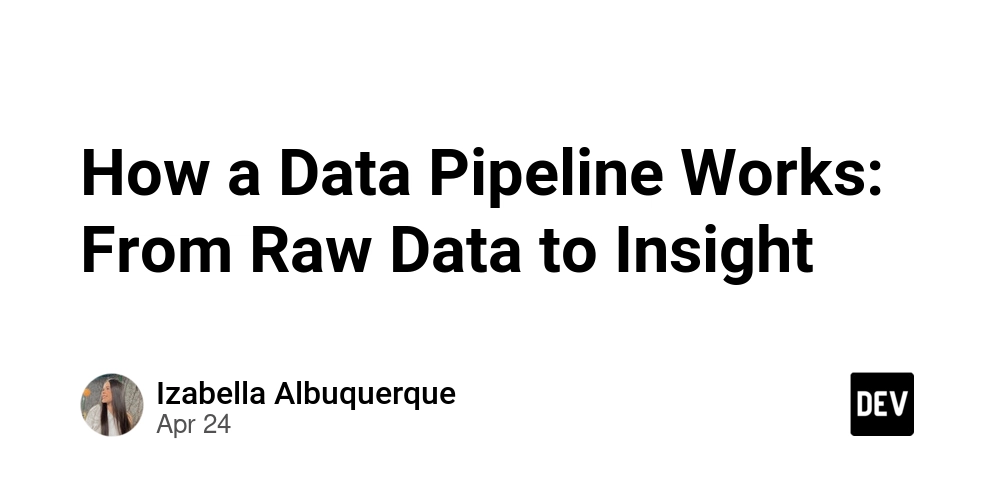Getting Started with Pydantic: Type-Safe Data Models in Python
Pydantic is a powerful Python library that leverages type hints to provide robust data validation and serialization. It simplifies the process of defining, validating, and parsing data models, making it an essential tool for developers working with APIs, configuration files, or any data-driven application. In this post, we’ll explore Pydantic’s core concepts, walk through its installation, and demonstrate how to create a type-safe User model. What is Pydantic and Why Use It? Pydantic allows you to define data models using Python’s type annotations. It automatically validates data against these types, ensuring correctness at runtime. Key benefits include: Type Safety: Catch type errors early with minimal boilerplate. Data Validation: Enforce constraints like string lengths, number ranges, or required fields. Automatic Parsing: Convert data (e.g., JSON) into Python objects. Developer Experience: Integrates seamlessly with IDEs for autocompletion and type checking. Pydantic is widely used in frameworks like FastAPI and for validating configuration files, making it a go-to choice for modern Python development. Installing Pydantic To get started, install Pydantic using uv, a fast and modern Python package manager. Open your terminal and run: uv install pydantic Ensure you’re using Python 3.7 or later, as Pydantic relies on type hints introduced in recent Python versions. If you haven’t installed uv yet, you can get it from uv’s official documentation. Basic BaseModel Usage Pydantic models are defined by subclassing BaseModel. Each field in the model is annotated with a type, and Pydantic handles validation automatically. Here’s a simple example: from pydantic import BaseModel class Person(BaseModel): name: str age: int # Valid data person = Person(name="Alice", age=25) print(person) # name='Alice' age=25 # Invalid data try: Person(name="Bob", age="thirty") # Type error: age should be an int except ValueError as e: print(e) In this example, Pydantic ensures that name is a string and age is an integer. If the data doesn’t match, a ValidationError is raised. Type Validation with Primitives Pydantic supports a wide range of primitive types, including int, str, bool, float, datetime, and more. You can also add constraints using Pydantic’s field options. For instance: from pydantic import BaseModel, EmailStr from datetime import date class Employee(BaseModel): name: str email: EmailStr # Validates email format is_active: bool joined_on: date employee = Employee( name="Charlie", email="charlie@example.com", is_active=True, joined_on="2023-01-15" ) print(employee) Here, EmailStr ensures the email field is a valid email address, and date parses the string "2023-01-15" into a datetime.date object. Pydantic’s type coercion converts compatible inputs (like a string to a date) automatically. Error Handling and ValidationError When validation fails, Pydantic raises a ValidationError with detailed error messages. This makes it easy to debug issues or provide user-friendly feedback. Example: from pydantic import BaseModel, ValidationError class Product(BaseModel): id: int name: str price: float try: Product(id="not-an-int", name="Laptop", price=999.99) except ValidationError as e: print(e) The output will look something like: 1 validation error for Product id value is not a valid integer (type=type_error.integer) The ValidationError provides a clear description of what went wrong, including the field and the type of error. Example: Defining a User Model Let’s put it all together by defining a User model and parsing data from a dictionary, as you’d commonly do when handling JSON data from an API. from pydantic import BaseModel, EmailStr, ValidationError from datetime import date class User(BaseModel): id: int username: str email: EmailStr birth_date: date is_active: bool = True # Default value # Sample data (e.g., from an API) user_data = { "id": 1, "username": "johndoe", "email": "john.doe@example.com", "birth_date": "1990-05-20", "is_active": False } try: # Parse and validate the dictionary user = User(**user_data) print(user) print(user.dict()) # Convert back to a dictionary except ValidationError as e: print("Validation failed:", e) Output: id=1 username='johndoe' email='john.doe@example.com' birth_date=datetime.date(1990, 5, 20) is_active=False {'id': 1, 'username': 'johndoe', 'email': 'john.doe@example.com', 'birth_date': datetime.date(1990, 5, 20), 'is_active': False} In this example: The User model defines fields with specific types and a default value for is_active. The dictionary user_data is unpacked into the model using **user_data. Pydantic validates the data and converts birth_date from a string to a date object. The dict() meth

Pydantic is a powerful Python library that leverages type hints to provide robust data validation and serialization. It simplifies the process of defining, validating, and parsing data models, making it an essential tool for developers working with APIs, configuration files, or any data-driven application. In this post, we’ll explore Pydantic’s core concepts, walk through its installation, and demonstrate how to create a type-safe User model.
What is Pydantic and Why Use It?
Pydantic allows you to define data models using Python’s type annotations. It automatically validates data against these types, ensuring correctness at runtime. Key benefits include:
- Type Safety: Catch type errors early with minimal boilerplate.
- Data Validation: Enforce constraints like string lengths, number ranges, or required fields.
- Automatic Parsing: Convert data (e.g., JSON) into Python objects.
- Developer Experience: Integrates seamlessly with IDEs for autocompletion and type checking.
Pydantic is widely used in frameworks like FastAPI and for validating configuration files, making it a go-to choice for modern Python development.
Installing Pydantic
To get started, install Pydantic using uv, a fast and modern Python package manager. Open your terminal and run:
uv install pydantic
Ensure you’re using Python 3.7 or later, as Pydantic relies on type hints introduced in recent Python versions. If you haven’t installed uv yet, you can get it from uv’s official documentation.
Basic BaseModel Usage
Pydantic models are defined by subclassing BaseModel. Each field in the model is annotated with a type, and Pydantic handles validation automatically.
Here’s a simple example:
from pydantic import BaseModel
class Person(BaseModel):
name: str
age: int
# Valid data
person = Person(name="Alice", age=25)
print(person) # name='Alice' age=25
# Invalid data
try:
Person(name="Bob", age="thirty") # Type error: age should be an int
except ValueError as e:
print(e)
In this example, Pydantic ensures that name is a string and age is an integer. If the data doesn’t match, a ValidationError is raised.
Type Validation with Primitives
Pydantic supports a wide range of primitive types, including int, str, bool, float, datetime, and more. You can also add constraints using Pydantic’s field options. For instance:
from pydantic import BaseModel, EmailStr
from datetime import date
class Employee(BaseModel):
name: str
email: EmailStr # Validates email format
is_active: bool
joined_on: date
employee = Employee(
name="Charlie",
email="charlie@example.com",
is_active=True,
joined_on="2023-01-15"
)
print(employee)
Here, EmailStr ensures the email field is a valid email address, and date parses the string "2023-01-15" into a datetime.date object. Pydantic’s type coercion converts compatible inputs (like a string to a date) automatically.
Error Handling and ValidationError
When validation fails, Pydantic raises a ValidationError with detailed error messages. This makes it easy to debug issues or provide user-friendly feedback.
Example:
from pydantic import BaseModel, ValidationError
class Product(BaseModel):
id: int
name: str
price: float
try:
Product(id="not-an-int", name="Laptop", price=999.99)
except ValidationError as e:
print(e)
The output will look something like:
1 validation error for Product
id
value is not a valid integer (type=type_error.integer)
The ValidationError provides a clear description of what went wrong, including the field and the type of error.
Example: Defining a User Model
Let’s put it all together by defining a User model and parsing data from a dictionary, as you’d commonly do when handling JSON data from an API.
from pydantic import BaseModel, EmailStr, ValidationError
from datetime import date
class User(BaseModel):
id: int
username: str
email: EmailStr
birth_date: date
is_active: bool = True # Default value
# Sample data (e.g., from an API)
user_data = {
"id": 1,
"username": "johndoe",
"email": "john.doe@example.com",
"birth_date": "1990-05-20",
"is_active": False
}
try:
# Parse and validate the dictionary
user = User(**user_data)
print(user)
print(user.dict()) # Convert back to a dictionary
except ValidationError as e:
print("Validation failed:", e)
Output:
id=1 username='johndoe' email='john.doe@example.com' birth_date=datetime.date(1990, 5, 20) is_active=False
{'id': 1, 'username': 'johndoe', 'email': 'john.doe@example.com', 'birth_date': datetime.date(1990, 5, 20), 'is_active': False}
In this example:
- The
Usermodel defines fields with specific types and a default value foris_active. - The dictionary
user_datais unpacked into the model using**user_data. - Pydantic validates the data and converts
birth_datefrom a string to adateobject. - The
dict()method serializes the model back to a dictionary, useful for API responses.
If we pass invalid data, like an incorrect email or a non-integer id, Pydantic will raise a ValidationError with details.
Conclusion
Pydantic makes it easy to define type-safe data models with minimal code. By leveraging Python’s type hints, it provides automatic validation, error handling, and data parsing, saving you from writing repetitive boilerplate. Whether you’re building APIs, validating user input, or managing configuration files, Pydantic is a must-have tool in your Python toolkit.
To dive deeper, check out the Pydantic documentation for advanced features like nested models, custom validators, and settings management. Happy coding!











































































![Apple Developing Battery Case for iPhone 17 Air Amid Battery Life Concerns [Report]](https://www.iclarified.com/images/news/97208/97208/97208-640.jpg)
![Apple to Split iPhone Launches Across Fall and Spring in Major Shakeup [Report]](https://www.iclarified.com/images/news/97211/97211/97211-640.jpg)
![Apple to Move Camera to Top Left, Hide Face ID Under Display in iPhone 18 Pro Redesign [Report]](https://www.iclarified.com/images/news/97212/97212/97212-640.jpg)
![AirPods 4 On Sale for $99 [Lowest Price Ever]](https://www.iclarified.com/images/news/97206/97206/97206-640.jpg)













































































































_Inge_Johnsson-Alamy.jpg?width=1280&auto=webp&quality=80&disable=upscale#)




























































































































![[The AI Show Episode 145]: OpenAI Releases o3 and o4-mini, AI Is Causing “Quiet Layoffs,” Executive Order on Youth AI Education & GPT-4o’s Controversial Update](https://www.marketingaiinstitute.com/hubfs/ep%20145%20cover.png)





























































































































































![From Art School Drop-out to Microsoft Engineer with Shashi Lo [Podcast #170]](https://cdn.hashnode.com/res/hashnode/image/upload/v1746203291209/439bf16b-c820-4fe8-b69e-94d80533b2df.png?#)

![[DEALS] Microsoft 365: 1-Year Subscription (Family/Up to 6 Users) (23% off) & Other Deals Up To 98% Off – Offers End Soon!](https://www.javacodegeeks.com/wp-content/uploads/2012/12/jcg-logo.jpg)

































































































